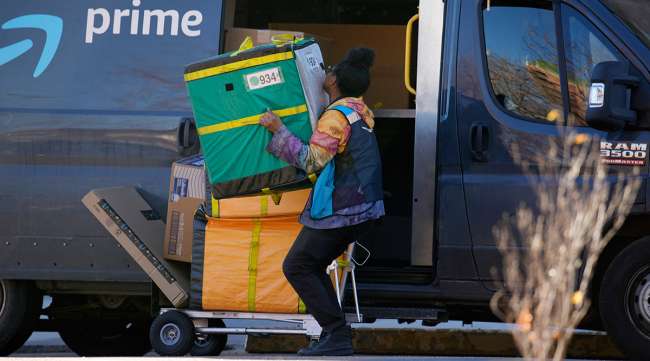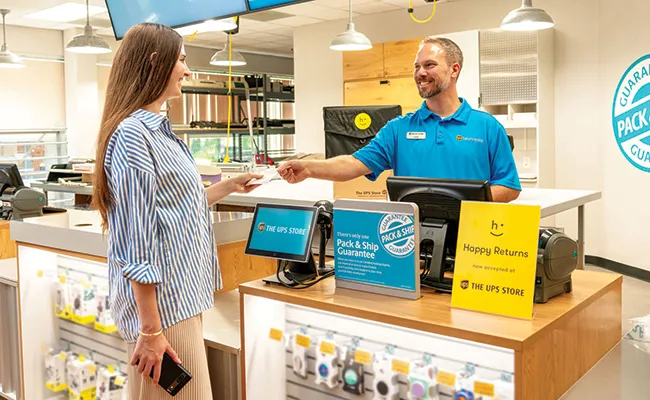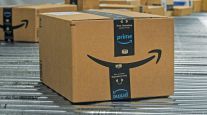Could Free Shipping Be Coming to an End for Online Shoppers?

[Stay on top of transportation news: Get TTNews in your inbox.]
The demise of free shipping and returns has been projected enough times over the past eight years that it could evoke the Mark Twain quote, “the report of my death was an exaggeration.”
A Google search for “end of free shipping” churns out dozens of media and trade group reports.
This time, however, consumer concerns may be warranted.
Retail analysts and media reports say consumers are facing return costs up to $10 depending on what is being returned, how much time has passed since the purchase, how often the customer makes returns, and the impact of fraudulent returns.
REVERSE LOGISTICS: Industry takes a fresh look
Retail research firm First Insight reported in November that one-third of consumers were willing to spend at least $10 for shipping during the 2023 holiday shopping season. That includes 91% of Gen Z consumers.
“The days of high consumer expectation for free and fast shipping may be in the rearview mirror, and retailers may no longer have to automatically offer free shipping simply to remain competitive,” said Greg Petro, the firm’s chief executive.
The cost of Amazon Prime has nearly doubled from $79 when it debuted in 2005 to $139 currently.
The group found that consumers willing to pay for shipping were 2.5 times more likely to spend more on holiday shopping overall than they did in 2022.
“Furthermore, more than three-quarters of the older consumers in this group — Gen X and boomers — are willing to spend $20 or more on shipping, with half of younger consumers saying the same,” the First Insight report stated.
The willingness to pay, however, comes with a quid pro quo expectation, according to First Insight.
“Despite their willingness to spend, these consumers do want to believe they are getting a bargain,” the firm said, “with 42% stating that they will need a minimum promotional offer of between 35% and 50% in order to entice them to convert.”
End of one-size-fits-all?
Retail research firm Narvar said in a report on consumer spending trends — titled “The end of one-size-fits-all returns” — that the number of retailers charging return fees has jumped from 33% in 2021 to 41% in 2022. That’s in addition to restocking and handling fees.
Meanwhile, some retailers are increasing the spending amount to qualify for free shipping, or charging more for speedier deliveries.
Many retailers still waive some, if not all, of those fees when shoppers join their customer loyalty program with a membership fee, or agree to take a store credit.
The cost of Amazon Prime has nearly doubled from $79 when it debuted in 2005 to $139 currently, serving in part as a pre-paid shipping mechanism. Amazon.com Inc. ranks No. 1 on the Transport Topics Top 50 list of the largest global companies and No. 9 on TT's Top 100 list of largest private carriers in North America.
If no membership or loyalty program is available, Narvar found that $5 per item is about the most consumers are willing to pay.
Other retailers are emphasizing returning online purchases to their brick-and-mortar stores in hopes of gaining new spending while customers are there.
“To put it plainly: Retailers spent years getting us addicted to online shopping,” writes Emily Stewart in a recent post for BusinessInsider.com. “And now that we’re hooked, they have more leeway to jack up fees for logistics. They are charging to send stuff back, shortening return deadlines, and refusing to accept some items entirely.
“Retailers want to dissuade consumers from making returns at all — or at least force them to do it in a more profitable manner, like physically bringing stuff back to stores.”
The challenge for the brick-and-mortar stores is whether accepting online returns cuts into their sales and profits.
It may work
Narvar found that half of online shoppers are willing to make an in-store return if the store has a convenient location and shopping hours.
About 42% said they would combine making a return with additional shopping, while 34% said their motivation is avoiding return fees, and 28% want an immediate refund.
Get the inside scoop on ATA's Technology & Maintenance Council Annual Meeting March 4-7 in New Orleans. Tune in above or by going to RoadSigns.ttnews.com.
Meanwhile, about two-thirds of non-Amazon shoppers preferred a refund over an exchange, particularly if the item being returned is a high-dollar purchase.
Narvar found that about 25% of consumers are willing to pay a return fee “for some kind of return convenience, with the top requested service being scheduled home pickup.”
“59% of those who make frequent returns are under the age of 45, with millennials and Gen Z-ers accounting for the bulk of returns,” the Narvar report added.
According to BusinessInsider.com, the fading away of free shipping isn’t necessarily a bad outcome.
It may signal to consumers that the indulgence of having an online free dressing room comes not only with a cost to the vendor, but also potentially to the consumer.
“Most of us could stand to be more thoughtful in our purchases — especially in a world where our unprecedented levels of consumption are such a huge part of what’s making the planet uninhabitable,” Stewart wrote.
“If making shipping and returning a little less frictionless helps us pause every now and then over the ‘add to cart’ button, maybe that’s not such a terrible trade-off.”
Cost of returns
Consumers returned $761 billion worth of merchandise in 2022, with 26% returning more than four items in the last six months of 2022, according to Narvar.
It’s not unexpected that fit and size are the top reason for all returns at 45% in 2022, Narvar said.

In 2023, UPS Inc. acquired Happy Returns, a software and reverse logistics company that enables frictionless, no-box, no-label returns for merchants and consumers. (UPS)
“What’s most interesting about the size-fit problem is that it remains pervasive despite the fact most shoppers (78%) are not first-time customers — in other words, even though they’ve bought from retailer ‘X’ before, they’re still not confident about the size or fit of their purchase,” Narvar said.
Meanwhile, a December 2022 survey by the National Retail Federation and Appriss Retail determined a 16.5% return rate for 2022 representing $816 billion worth of merchandise.
“While no retailer looks forward to returns, their impact does not need to be negative,” the Narvar report stated. “Examined through the right lens, returns provide retailers with an opportunity to reconnect with customers, cultivate trust and cement loyalty through a frictionless experience.”
Returns do not need to be the last touch on the customer journey, the firm said. “If the return experience is constructed in the right way — for example, offering instant refunds in the form of store credit — returns are just a conduit to the next sale.”
For example, several retailers with a North Carolina Triad presence that have opened Amazon return kiosks — such as Kohl’s and Staples — include their store coupons on the Amazon return receipt.
Click-and-collect trend
As free shipping and returns becomes less available, consumers are likely to begin calculating whether an in-store purchase is a better deal even with a higher retail price, said Roger Beahm, a marketing professor at Wake Forest University School of Business.
“Consumers will most certainly now consider the overall value of their online purchases more carefully relative to buying a comparable item in brick-and-mortar,” Beahm said.

Beahm
“More thought will be given to the value of the other benefits of buying online, e.g., the still potentially lower price of the total purchase even with shipping included, and the time and energy still saved by not going to and from a store to buy.
“The magnitude of the increased total cost from adding in shipping, along with actually seeing that shipping cost as a separate line item at checkout, will ultimately dictate if the consumer still finds sufficient value in the remaining benefits to outweigh a trip to the store.”
Beahm projects an increase in “click-and-collect” shopping that combines online shopping with in-store pick-up.
“Most retailers will allow customers to order items online with free at-store pick-up since items are delivered from retailer warehouses to stores frequently,” Beahm said.
“This not only saves the shopper from having to pay shipping, but can also provide immediate confirmation at pick-up that an item meets their quality standards — thus minimizing the hassle and potential shipping cost of a return.”
Beahm predicts that most consumers will grow accustomed to paying for home delivery.
“It’ll simply become part of the cost of buying online,” he said.
“While there will always be some merchants who will seek to differentiate themselves by offering free delivery, it’ll most likely be on products with a low risk of return.
“Even when shipping is offered as free, the cost will still be embedded in the item price since shipping is a cost that must be recovered for a retailer to realize a reasonable profit from the sale.”
Time vs. money
The acceptance of the end of free shipping and growth in return fees will come down to individual customer preference, said Michael Walden, an economics professor at N.C. State.
“Those who are very cost-conscious have a higher likelihood of returning to in-person shopping,” Walden said. “However, I think there are more consumers who are now used to online buying with free delivery and free returns.”

Walden
For those consumers, Walden said, “Time is more limited than money.”
“Personal schedules are now built around online shopping, and charging for delivery and returns will not be enough to change those schedules,” he said. “In the future, drone deliveries may reduce the cost of that service.”
Walden said artificial intelligence has the potential of using customer measurements to conduct “virtual try-ons” of alternative sizes for an individual.
“A decade from now, charges for delivery will likely be smaller, and the return rate will be a fraction of what it is today,” Walden projected.
Want more news? Listen to today's daily briefing below or go here for more info:
Distributed by Tribune Content Agency, LLC





